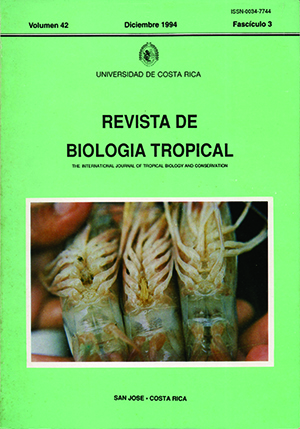Resumen
The leaf anatomy of 14 secondary and 17 primary tree species was studied in a 30 yr old secondary, montane Quercus forest in the Costa Rican Cordillera de Talamanca. On the average, foliar tissues are thicker in secondary species, due to the high proportion of spongy parenchyma for water storage. In secondary species the mean lamina thickness was 249.5 J.l.m and the mean thicknesses of palisade and spongy parenchyma were 85.8 J.l.m and 133.9 J.l.m, respectively. In primary species the mean lamina thickness was 220.7 J.l.m and the mean thicknesses of palisade and spongy parenchyma were 75.7 J.l.m and 107.9 J.l.m, respectively. TIte non-palisade parenchyma / palisade parenchyma ratio was slightly higher for secondary species. TIte thickness of palisade parenchyma and spongy parenchyma were significantly correlated for both primary and secondary species. Lamina thickness was significantly correlated with thickness of palisade parenchyma and spongy parenchyma for primary species only. Leaf anatornical values measured for this montane secondary forest fall mainly within the ranges known from montane primary forests in other tropical countries.##plugins.facebook.comentarios##

Esta obra está bajo una licencia internacional Creative Commons Atribución 4.0.
Derechos de autor 1994 Revista de Biología Tropical
Descargas
Los datos de descargas todavía no están disponibles.


